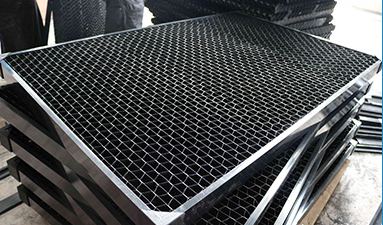Sep. 01, 2023
Agriculture
Air inlet louvers are a crucial component of ventilation systems in various industrial and commercial settings. They play a vital role in regulating airflow while preventing the ingress of unwanted elements like rain, debris, and pests. Properly sizing air inlet louvers is essential to ensure efficient and effective ventilation. In this essay, we will explore the factors and considerations involved in sizing air inlet louvers for optimal performance.

1. Understanding the Function of Air Inlet Louvers
Before diving into the sizing process, it's important to grasp the primary functions of air inlet louvers:
Air Regulation: Air inlet louvers control the volume of air entering a building or system, allowing for precise airflow management.
Protection: They act as barriers, shielding the interior from rain, snow, leaves, and other debris.
Pest Control: Louvers help prevent pests like birds and insects from entering the ventilation system.
Energy Efficiency: Properly sized louvers contribute to energy efficiency by minimizing the need for excessive heating or cooling.
2. Factors to Consider
When sizing air inlet louvers, several factors come into play:
2.1. Airflow Requirements
Determining the required airflow is a fundamental step. This involves assessing the ventilation needs of the space, considering factors like occupancy, equipment heat generation, and desired indoor air quality. The louvers must allow for adequate ventilation without causing excessive pressure drops.
2.2. Louver Type and Design
The type and design of the air inlet louvers are crucial. Different louvers offer varying levels of airflow control, protection, and aesthetics. For example, stationary louvers are ideal for basic airflow regulation, while adjustable louvers allow for more precise control.
2.3. Environmental Factors
Local environmental conditions play a role in sizing air inlet louvers. Areas with high rainfall or snowfall require louvers with superior water and weather resistance. Louvers must also resist corrosion in harsh environments.
2.4. Building Codes and Regulations
Compliance with building codes and regulations is essential. These codes often stipulate minimum requirements for ventilation systems, including louver sizing, fire safety, and accessibility.
3. Calculating Louver Size
To calculate the appropriate size of air inlet louvers, engineers and HVAC professionals typically use mathematical formulas and software tools. Some key calculations include:
3.1. Free Area
The free area of a louver refers to the open space available for airflow. It is typically expressed as a percentage of the total louver area. A higher free area allows for greater airflow.
3.2. Velocity
Calculating the air velocity is crucial to ensure that the louvers do not cause excessive airspeed, which can lead to turbulence and noise. The louver size should be adjusted to maintain acceptable airspeed.
3.3. Pressure Drop
Pressure drop calculations assess the resistance the louvers introduce into the system. Lower pressure drop is preferable to maintain efficient airflow.
4. Seek Expert Guidance
Sizing air inlet louvers can be a complex task, particularly for large or specialized systems. Consulting with HVAC engineers or professionals experienced in ventilation design is often recommended. They can ensure that the louvers are sized correctly to meet the specific needs of the project.
In conclusion, sizing air inlet louvers is a critical aspect of ventilation system design. Proper sizing ensures efficient airflow regulation, protection from external elements, and compliance with regulations. Factors such as airflow requirements, louver type, environmental conditions, and compliance with building codes all influence the sizing process. Seeking expert guidance is essential to ensure that the louvers effectively fulfill their role in maintaining indoor air quality and system efficiency.
Previous: Cultivating Success: The Advantages of Commercial Greenhouses
Next: Unraveling the Mystery: Why Do We Soak Walnuts Overnight?
If you are interested in sending in a Guest Blogger Submission,welcome to write for us!
All Comments ( 0 )